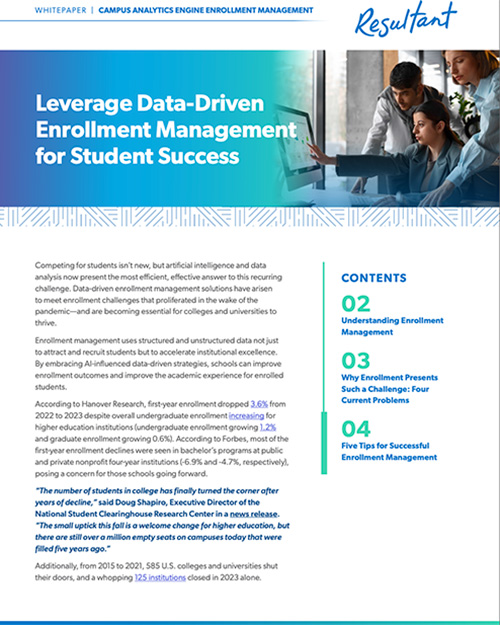With challenges around every corner, how do you improve enrollment management in your institution? A few important considerations help take that effort from “pie in the sky” to reality.
1. Develop a comprehensive enrollment strategy.
A robust enrollment strategy should align with an institution’s brand and target audience, utilizing tactics such as targeted outreach, modern, SEO-centric social media marketing, recruitment events, and personalized communications to engage prospective students effectively. A comprehensive strategy helps you meet these potential students where they are and demonstrate how your university is the right fit, launching a new, potentially deep relationship with a new ambassador for your institution. Finding the right students also brings better retention.
2. Foster collaboration across departments.
Encourage cross-departmental collaboration to create a unified enrollment management process, ensuring all stakeholders understand their roles in achieving enrollment objectives and supporting student success. Creating a better view of each student’s entire journey for all stakeholders and staff across the institution helps stakeholders invest in the effort, which ultimately can improve and diversify enrollment.
3. Harness the power of data.
Utilize data insights to find insight from key metrics such as applicant rates and demographics . By analyzing these metrics, institutions can identify areas for improvement and tailor their strategies to meet evolving student needs. A disheartening 14% of Americans regard colleges and universities as a benefit to society. Data-driven enrollment management can help shift the perceptions that erode enrollment.
4. Emphasize personalized communication.
Engage prospective students and families through personalized communication channels, including email, social media, phone calls, and targeted advertising. Personalization builds trust and demonstrates a commitment to engage directly with each student as a unique individual, which enhances the likelihood of enrollment.




